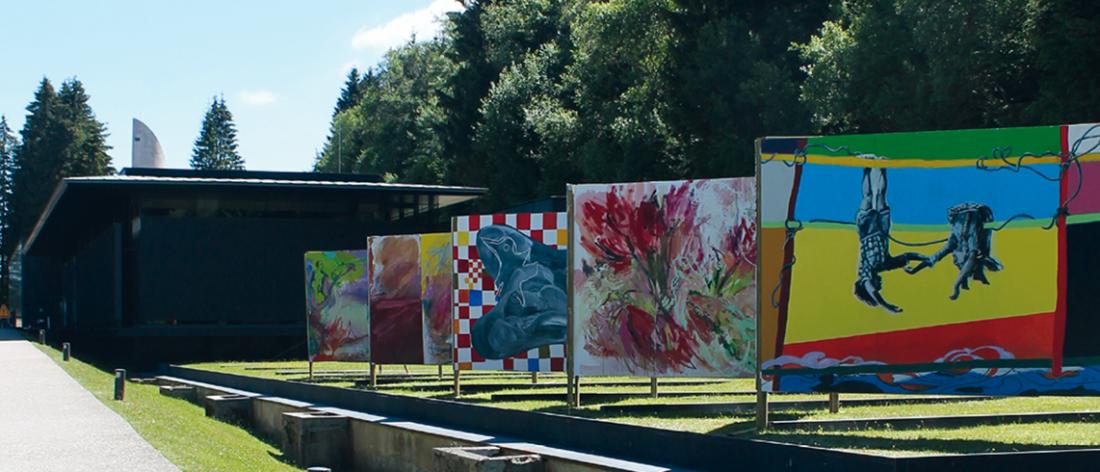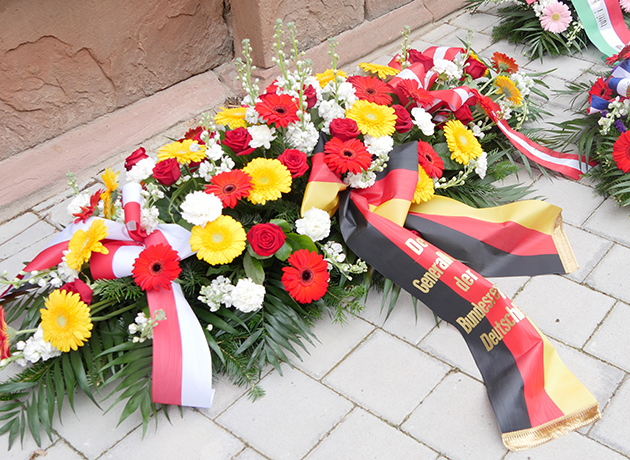Struthof, a Franco-German site

The first transnational site to obtain the European Heritage Label, Struthof seems like the ultimate Franco-German remembrance site. But despite being the focus of countless educational initiatives, the site has yet to become established as a shared commemorative space for French and Germans.
The ambition of the European Centre for Resistance Deportees (CERD), based on the site of the former Natzweiler-Struthof concentration camp, is part of an increasingly firm commitment to include our German neighbours and partners. It is worth remembering that the main camp had about 50 subcamps, most of them located across the Rhine.
Obtaining the European Heritage Label in 2018, the application for which was handled by the CERD and the German Network of Remembrance Sites of the Former Natzweiler Concentration-Camp Complex (VGKN), was certainly a watershed in that process. It led to an increase in the number of Franco-German initiatives aimed at jointly bringing alive a memory which up until then had been confined to either side of the Rhine, with no real interaction between the two.
Participating in this new momentum, the 2018 schools project “Photographing remembrance” had French and German students create a shared remembrance, while the major art project “Fraternity” saw 32 artists – 16 French and 16 German – create large-scale paintings which went on display in France and Germany.
Paintings from the “Fraternity” project (2018). © CERD-Struthof
On 2 July 2019, 42 French and German teenagers, from the Collège Guynemer in Montbéliard and the Goethe-Gymnasium in Ludwigsburg, visited the former concentration camp “hand in hand”.
More recently, the creation by a Franco-German team of a shared website (www.natzweiler.eu) and a digital database about all the deportees interned in the camp provided an opportunity to pool and reconcile multiple sources of information.
With over 40 000 German visitors per year, 36 000 of them school students, Germany constitutes the core foreign visitorship to Struthof. Many further efforts are to be made to improve the welcome and support offered to them on their visits, in addition to the actions already carried out (French and German training for teachers and the publication of a teachers’ guide in both languages). Such efforts require greater cooperation between the two countries and the forging of new partnerships to respond to the remembrance challenges ahead, with the inevitable deaths of the last remaining survivors of the conflict.
But if the remembrance actions and events of the CERD draw increasingly on cross-border cooperation, catalysed by its European involvement with the VGKN, that cooperation has yet to be reflected in the commemorative sphere, perhaps. Up until now, there has rarely been a place for our German neighbours in the major ceremonies at Struthof, whether in terms of representation – often limited to veterans’ associations and diplomats – or organisation.

A German-Austrian-Polish wreath at the ceremony of 21 May 2021. © CERD-Struthof
Whereas all the post-war French presidents have honoured the official ceremonies at Struthof with their presence, to date not a single German chancellor has.
The search for new forms of commemoration that are more directly in tune with the general public and with young people in particular, based on a European ideal, certainly represents a historic opportunity to offer our German partners a more active role in their content and execution.
To include them in this process is also to recall how the first victims of Nazism and the first deportees to the camp were Germans themselves. Nearly 3 700 were registered at Natzweiler – common criminals, political opponents, “asocials”, Jews, homosexuals, Roma, Wehrmacht draft dodgers and Jehovah’s Witnesses – and they suffered the same fate as the 30 other nationalities of deportees represented at the camp.
While Germany now has a clear place in the Struthof commemorations, it remains to properly establish that place by giving it a more concrete resonance in the events to come. That will be another step forward in commemorative terms.

